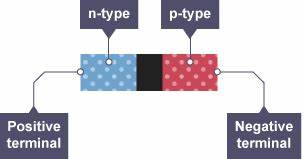ARCTURUS
SEMICONDUCTORS
SEARCH: LIBRARY of CONGRESS SUBJECT HEADINGS

TECHNOLOGY - T
- Semiconductors - ASML
- Semiconductors - TSMC
- Semiconductors - Production
- Semiconductors - Wire bonding
- Semiconductors - Silicon Wafers
- Semiconductors - Manufacturing
- Semiconductors - Supply Shortage
- Semiconductors - Structural analysis
- Semiconductors - ASML / TSMC / INTEL
- Semiconductors - Product development
- Semiconductors - Microchip processing
- Semiconductors - Materials engineering
- Semiconductors - Digital analysis / design
- Semiconductors - Silicon wafer transistion
- Semiconductors - Factory Architectural Design Plan
SUBJECT EXPERTS I
SUBJECT EXPERTS II
RESEARCH GUIDES
SEMICONDUCTOR NEWS
Program Development
Since no region has end-to-end capabilities for semiconductor design / microchip design and manufacturing, program development is restricted to a particular niche within the field. A business—or even a group of businesses within a region—may become a center(s) of expertise.
Design Aspects
Integrated circuit design involves the creation of electronic components: transistors, resistors, capacitorsand the interconnection of these components onto a piece of microchip, typically silicon or other pure elements. Microchips are created by adding impurities to the element.
Design Constraints
Developing semiconductor chips involves several key procedures that must be addressed such as product definition, design options, schedule and cost. Many tech companies have begun developing their own chips and that will likely help the industry in the future.
Design Optimization
Semiconductor manufacturing projects require the expertise of research/development personnel to initiate the automation process. Once the process is engaged, the technical aspects of implementation are supervised by different teams comprised of mechanical / electrical / engineers along with technicians to assure synchronization of the processes.
Designing Semiconductors
Computer software development tools can create optimal semiconductor designs consisting of layouts with specifications along with annotated peripherals. Engineers can use the software for co-operating during the design procedure, pulling old designs of circuit board components from libraries of printed circuit boards (PCB) and verify schematic diagrams of circuits.
Design Process/Simulation
Microchip process simulation is the modeling of the fabrication of semiconductor devices such as transistors. It is a branch of electronic design automation, and part of a sub-field known as technology CAD, or TCAD. Process simulation deals with modeling the fabrication on front end of line manufacturing steps. Back-end-of-line steps use tools like Sentaurus Interconnect.
